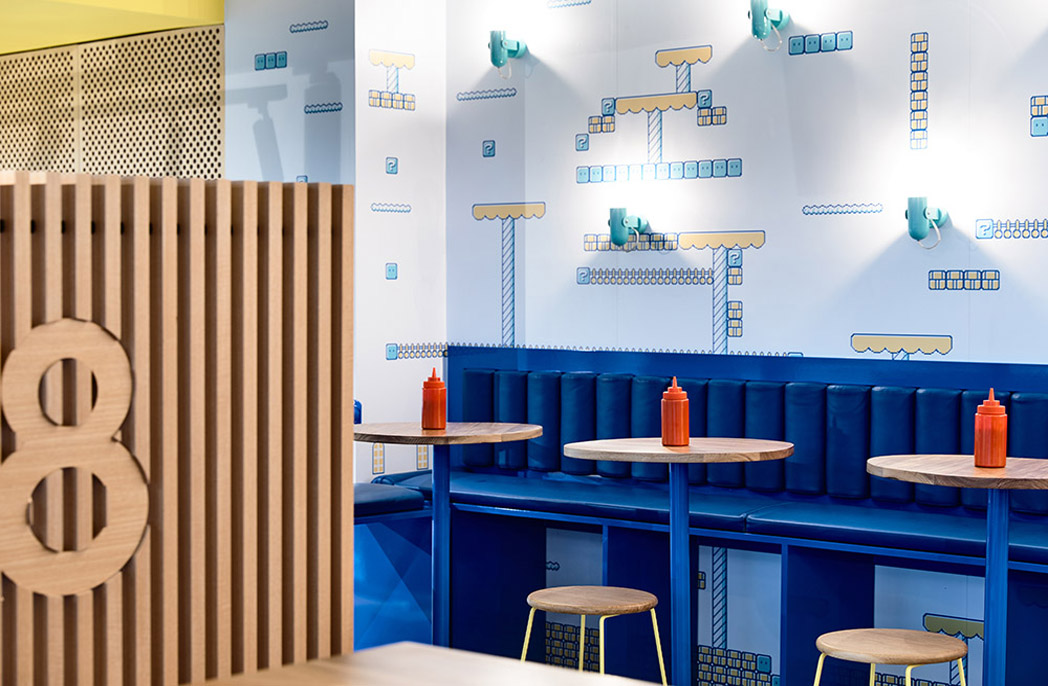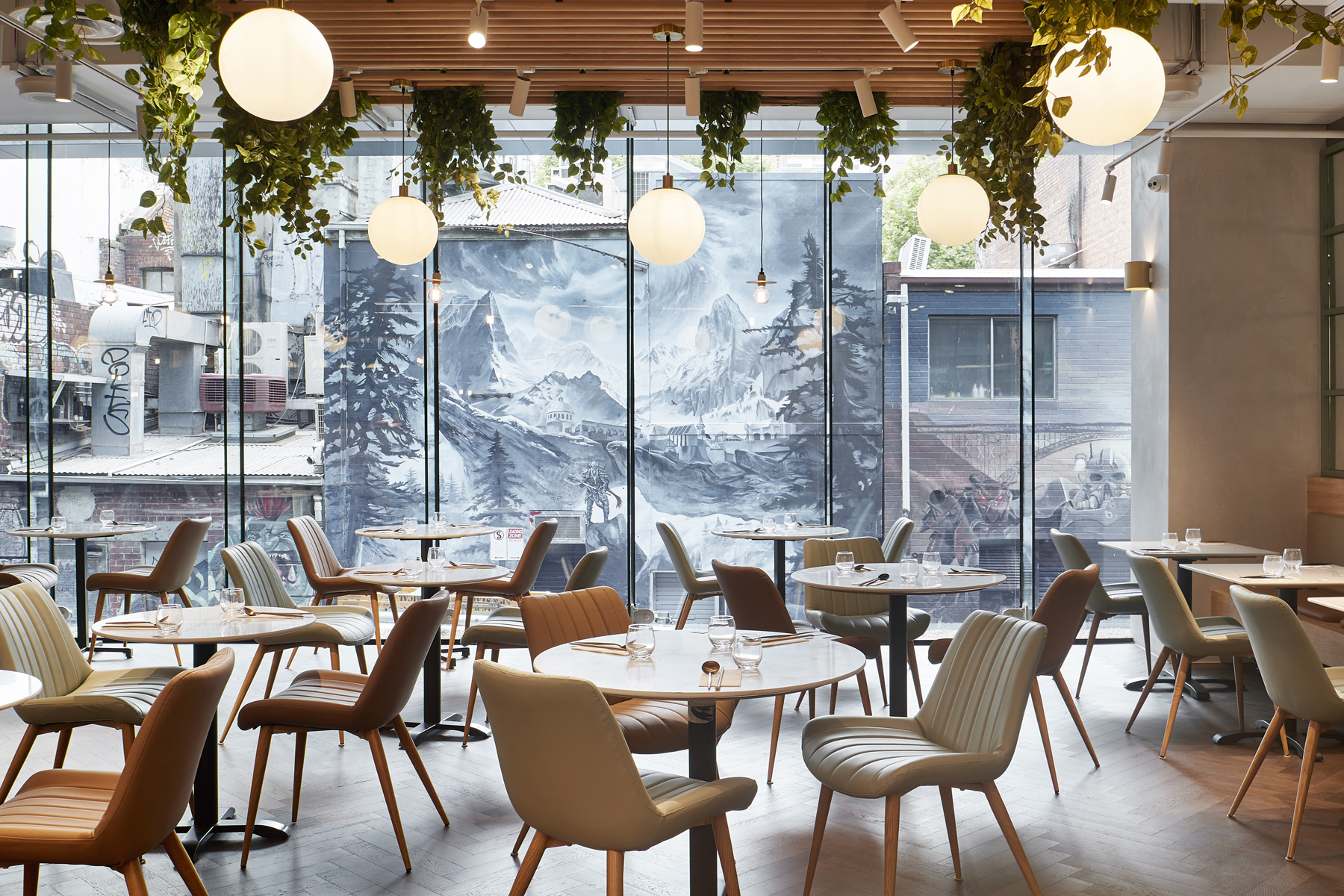
Architects EAT out: Crux & Co.
Architects EAT out: Crux & Co.
Share
Close to Melbourne city and across the road from Albert Park Lake is a small precinct of commercial buildings and multi-residential apartments on Albert Road.
Pedestrians jostle with cars to traverse the intersection and, through its close proximity to the thoroughfares of St Kilda Road and Queens Road, it’s always a busy spot. However, this hub of industry is fast becoming a destination of choice for Melbourne’s foodie elite with the establishment of chic cafés that cater to a discerning clientele.
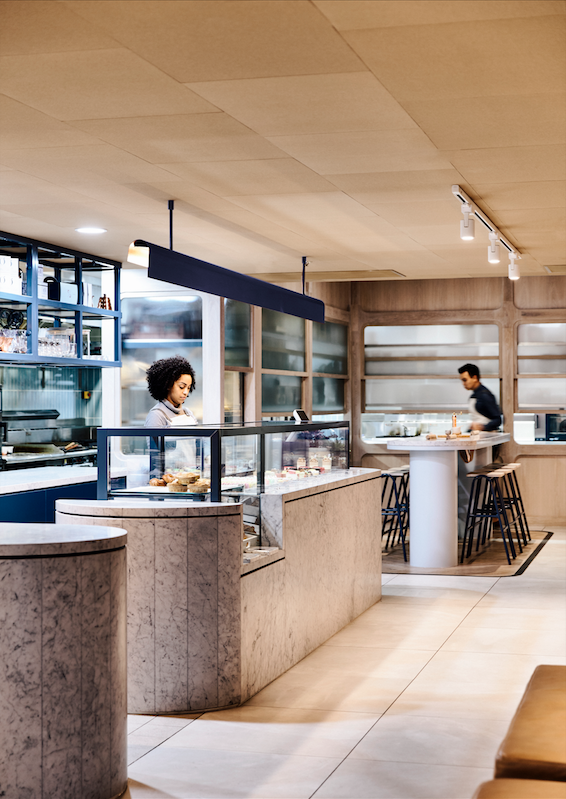
The latest café to open its bespoke doors is The Crux & Co., an oasis of comfort in a sea of retail shops and high-rise towers.
The Crux & Co. is owned by Kevin Lee, who has a plethora of successful hospitality venues to his name, including Lights in the Attic in Hawthorn. When Lee decided to open The Crux
& Co., the designer of choice for the project was Architects EAT. Founded in 2000, Architects EAT, under the direction of Albert Mo and Eid Goh, is an award-winning practice of note. With approximately 50 hospitality projects completed each year and dozens of residential and multi-residential commissions in progress at any given time, the practice never fails to impress with a consummate offering.
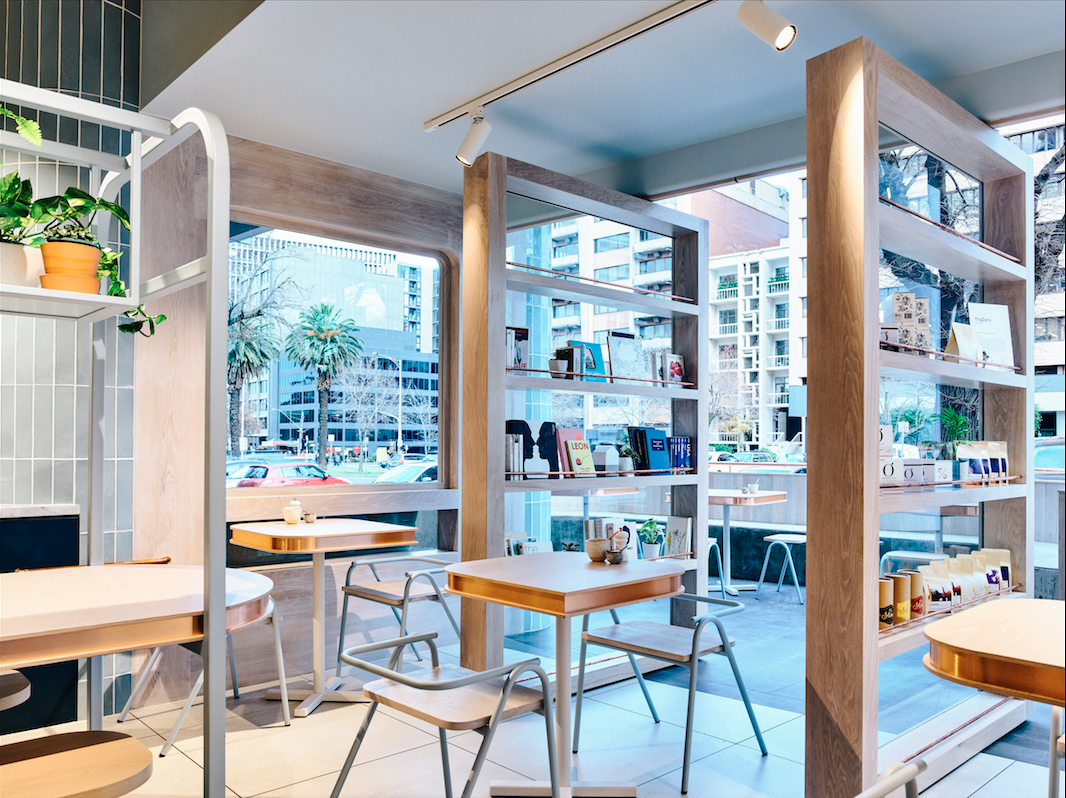
Entering The Crux & Co., the feel of the space is just right. A muted palette of blues, caramel, white and cream is the perfect colour combination for a relaxing café environment. Materiality is authentic and natural with pale American oak, brass, concrete, marble and the soft touches of cork, leather and felt.
The spatial footprint of the interior is 330 square metres, shaped as a long deep rectangle with a capacity for 110 patrons. The layout of the cavernous space was important in order to bring light and life to the rear of the premises and the challenge was ably met by lead designer Eid Goh who has organised the café into three loosely connected spaces with another small dining alcove outside.
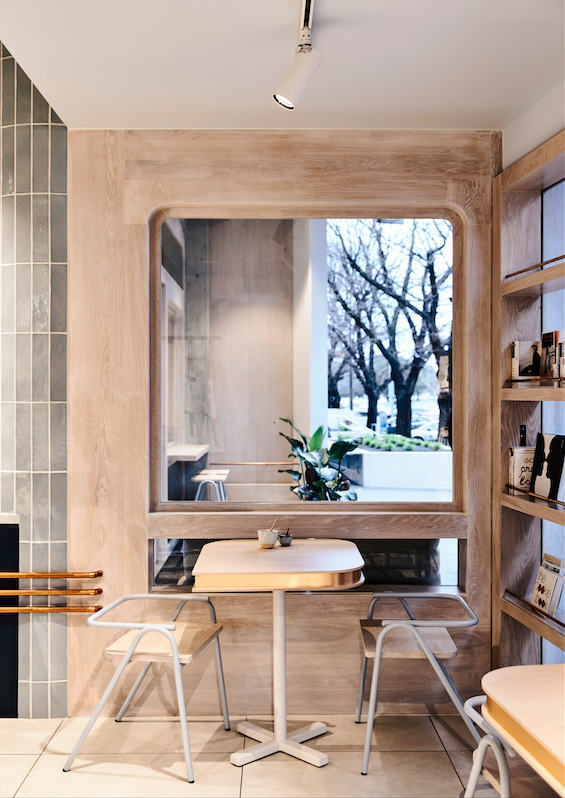
The three areas consist of a more intimate space at the back near the kitchen, the middle hub of the café and another area near the front windows near the serving counter. Goh has encouraged a flow to his design, utilising curves in furniture and built-in cabinetry to create a continuity throughout the interior.
At the rear of the café is the ‘chef’s table’ positioned close to the action of the kitchen and bakery, and it is possible to see the chefs and bakers working together through panels of glass and open windows.
A light grey concrete floor tile has been laid throughout (Tokyo White, Signorino); however, the chef’s table is delineated by an inset of American white oak timber boards in a herringbone design. The table itself is high and made of Carrara marble surrounded by 10 high, black, steel- framed ash stools (Transit, Meizai).
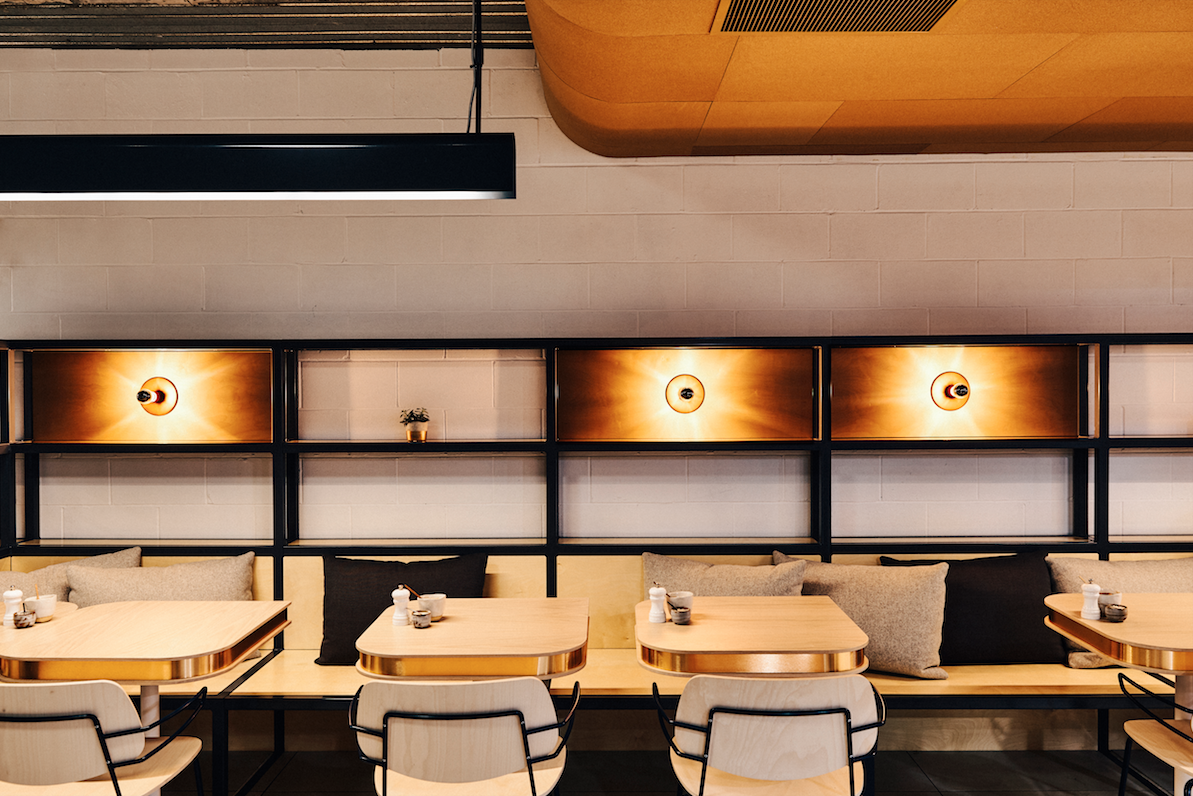
Bespoke laminate tables (Architects EAT design) and chairs (Ash, Sling, Meizai) line the sidewall and a built-in wall unit supports a long banquette (Architects EAT design) that also includes mood lighting (Lord Sconce, Dowel Jones).
Banquettes continue into the main body of the café affixed to each wall and the long cushioned seats and backs are covered in caramel leather (Sahara, Contemporary Leathers) that offers maximum comfort. With the addition of decorative leather straps (MadeMeasure) on the top of the seat, the cushions appear to hang, and this detail makes the ordinary quite special.
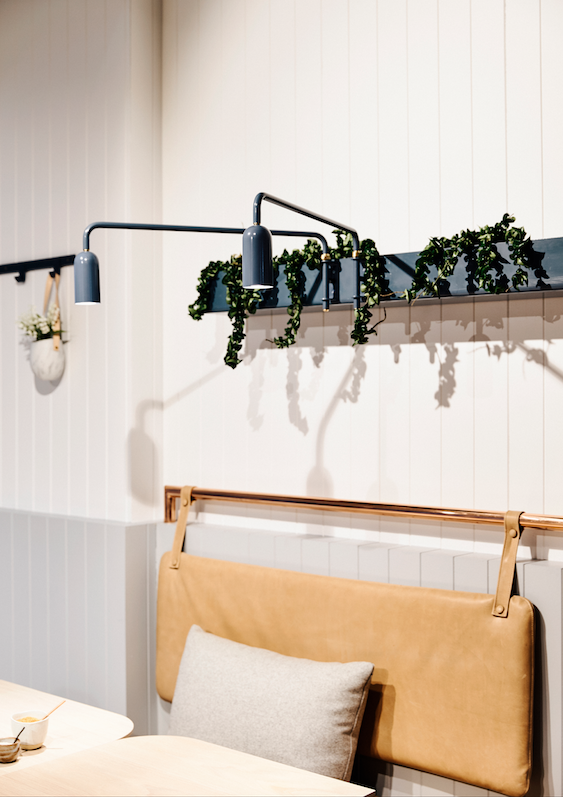
To enclose this area, Goh has included another leather banquette directly in front of the entrance and parallel to the serving counter for patrons to sit while waiting for takeaway coffees.
The serving counter is long and stretches three-quarters the length of the interior connecting to the kitchen. The servery back wall has been tiled in rectangular sea blue tiles (Ocean, Urban Edge Ceramics) and cabinets are curved with the fascia and top clad in Carrara marble with blue marine laminate highlights. Patisserie items are displayed in multiple glass cabinets to showcase the day’s products that have been baked on-site.
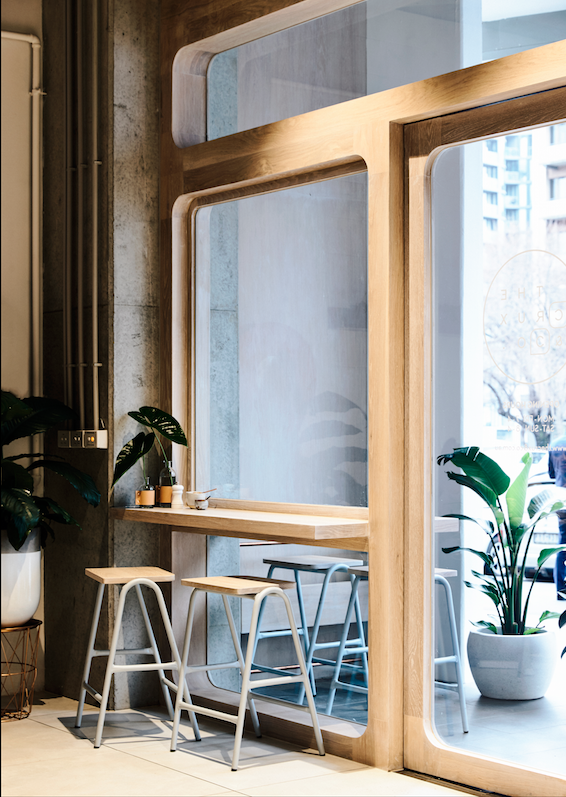
The third seating area is close to the entrance and in front of the servery. A large American oak table with a blue powder-coated steel canopy above creates a small separate meals area for eight and there are tables for two placed next to the floor-to-ceiling front windows. These windows are actually three pivoting glass doors that open to provide ventilation in summer and privacy for diners when open. The handles and locks are internal, hidden away, and to the untrained eye the three windows sit together as a normal frontage. To add interest, the windows contain shelves that have been dressed with books, objets and plants to resemble a library, albeit a sunny one, that lives and moves.
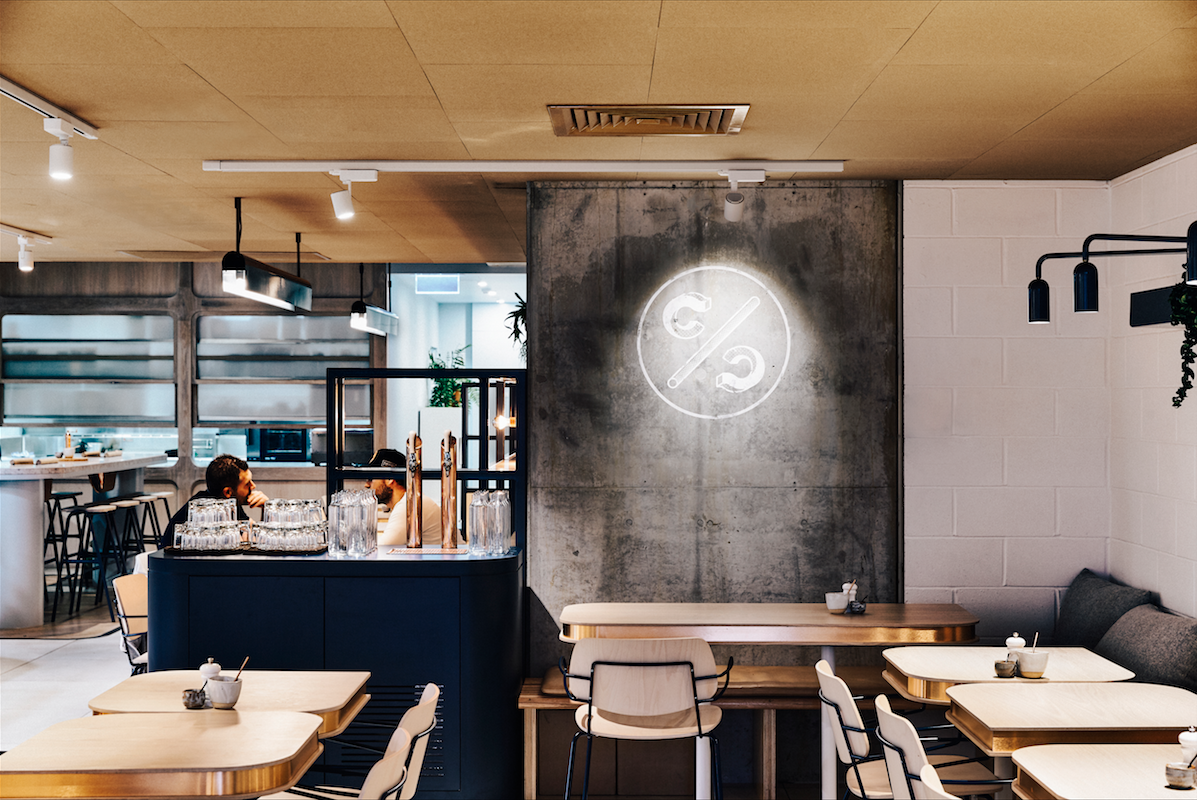
Throughout The Crux & Co. there are bespoke touches that raise the design level of the interior. Take the waiters’ stations, for example. Some are blue marine laminate and circular; others are Carrara marble and built-in, but all provide excellent function. Or the shelf above the banquettes on the main wall, which supports plants as well as the directional spot lamps (Loft, ISM Objects) that are focused on the tables below. Or perhaps the track lighting at the end of the servery, which has been painted a soft copper (Liquid Copper, Porter’s Paints) emulating the brass water taps on a nearby waiters’ station.
To add acoustic balance Goh has included cork tiles in his material palette. This is cork not as it once was, but a velvety beige material that wraps around a large bulkhead above the counter and covers a third of the ceiling. A felt menu board also helps to absorb sound and references the felt scatter cushions (Rime and Divina Melange 2, Kvadrat) on the banquettes.
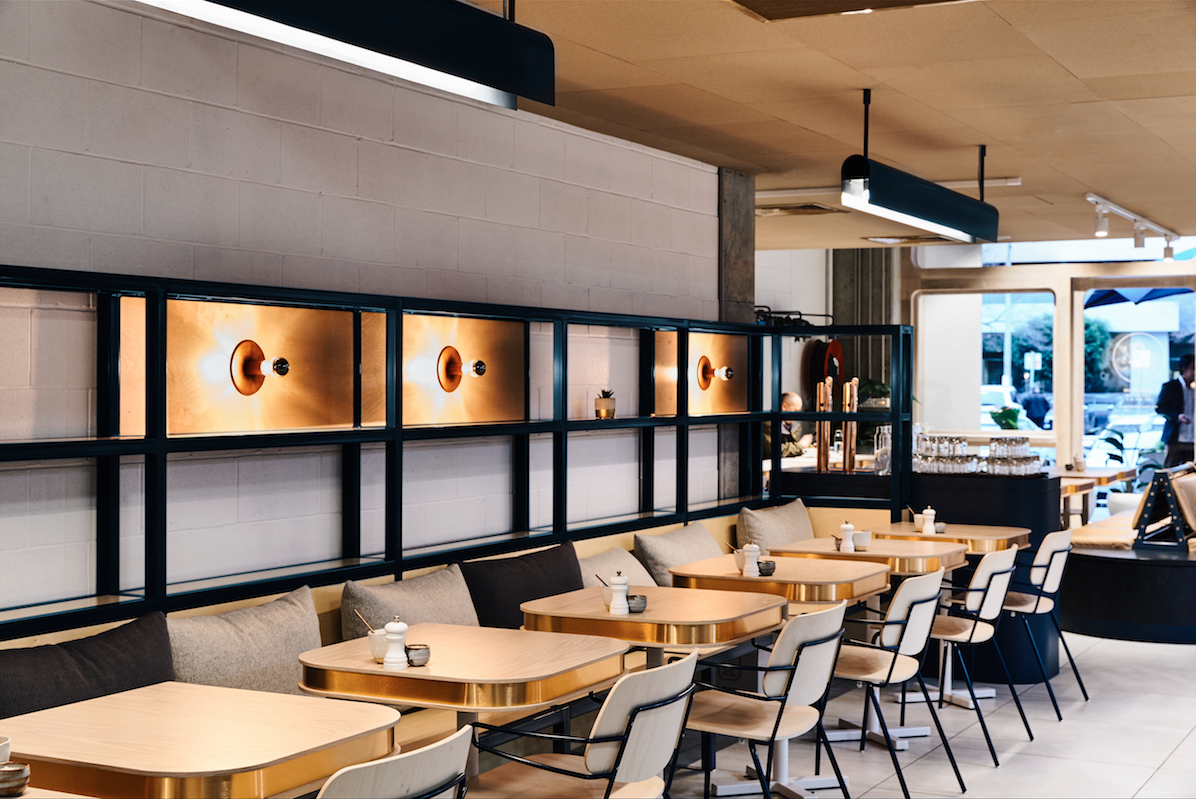
The Crux & Co. flagship café was finished within a three-month period, a tight schedule; however, there was another project on the drawing board, a smaller version of The Crux & Co. located at the Sheraton Hotel in Little Collins Street. Here the design was more a rebranding project in collaboration with Hue Studio (which created the graphics for the flagship café).
The interior is white and light with greenery a key design element. There are laminated tables and bentwood chairs and the cabinets are again curved to showcase the patisserie and light meals.
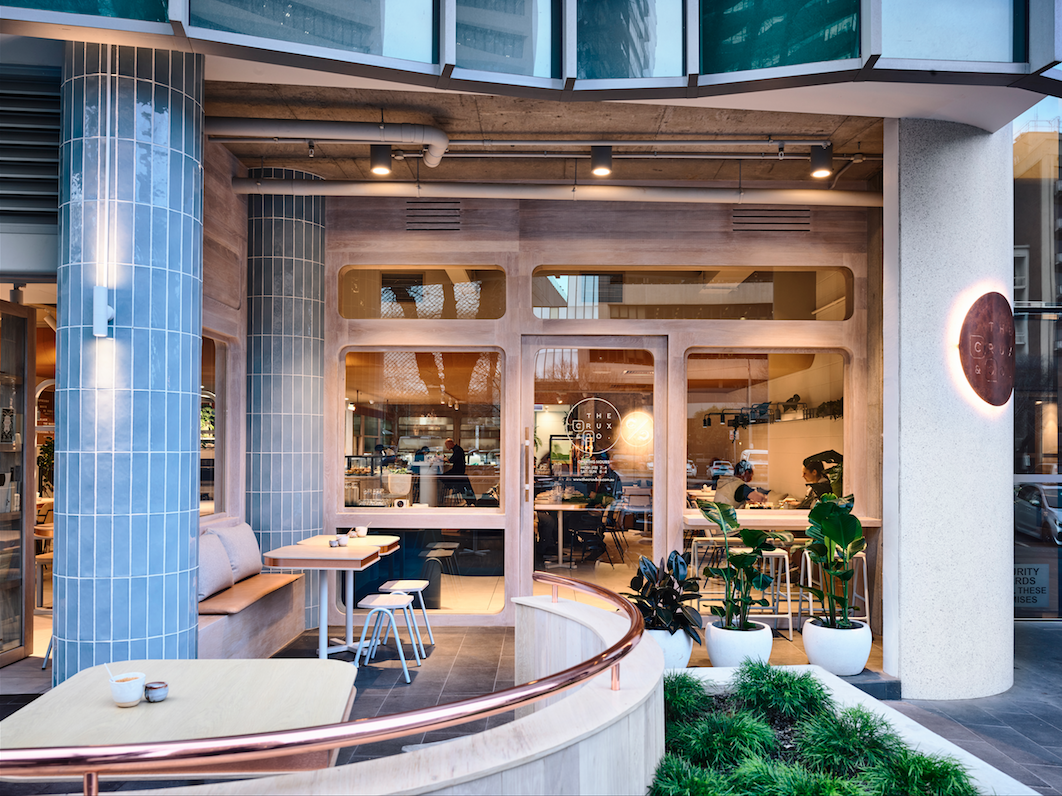
For both projects, Architects EAT has created interiors that are as delicious as the patisserie products on offer. In particular, the flagship café offers an ambience that is relaxed and masterfully designed.
Whether in Albert Road or the city, both venues offer an oasis of respite and sustenance that is unique and to be savoured.
Photography by Derek Swalwell.
This article originally appeared in inside 95 – available digitally through Zinio.
You Might also Like

